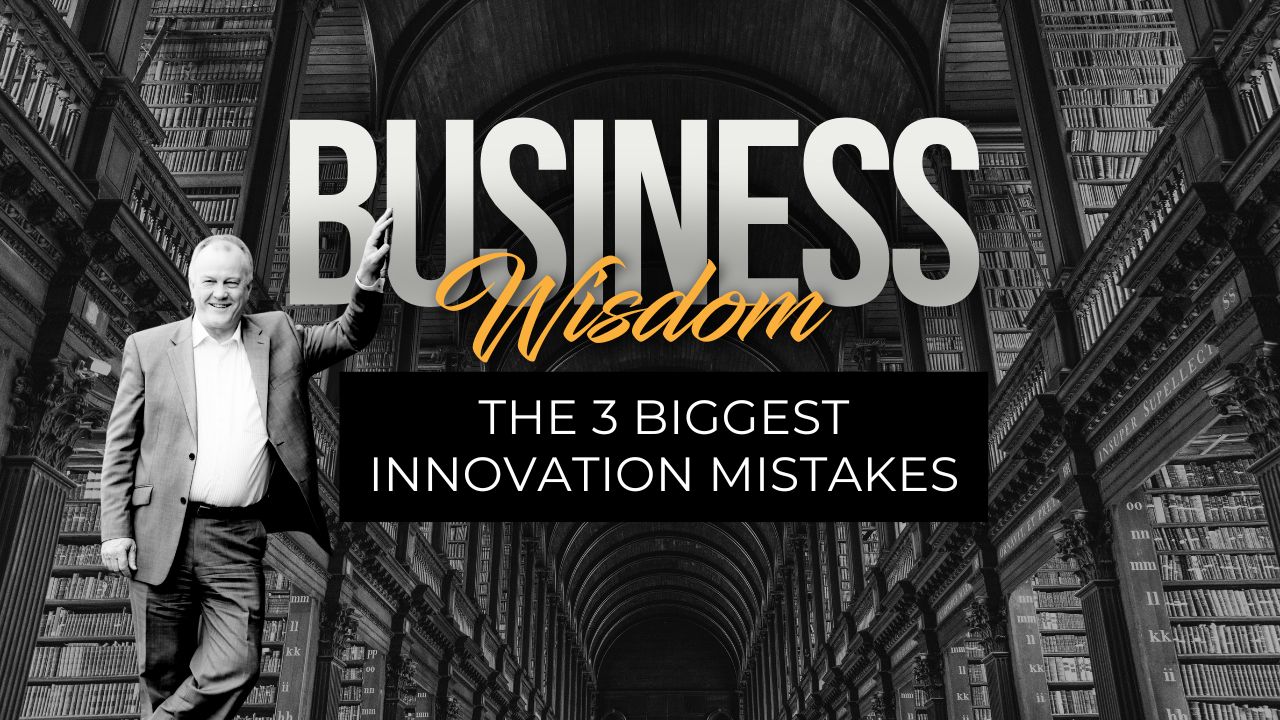As much as innovation is critical to business growth and evolution, it does come with some risks.
Get it right and innovation can transform your business into an industry powerhouse, but if you get it wrong or innovate the wrong thing for the wrong reason, you could damage your business and brand.
Here, we look at the three biggest innovation mistakes that businesses make and how to avoid them, including:
- Defining clear innovation outcomes
- The innovation questions to ask yourself
- Keeping your core business front of mind
More than a buzzword
Innovation has become a buzzword in today’s business landscape. Businesses are eager to innovate, eager to keep up with the competition, and sometimes, in that excitement, they forget why they are innovating in the first place.
Clarity: Know Your ‘What’, ‘Why’, and ‘Who’
One of the biggest mistakes businesses make is not having a clear understanding of what they are innovating for, or even what innovation is about.
Without clarity, innovation can become a jumble of complications. It’s vital to be absolutely sure about what you’re trying to achieve with your innovative processes, why you’re doing it, and who will benefit from it.
Start by asking yourself these questions:
- Why am I innovating?
- What exactly is this innovation going to deliver?
- Who will this innovation benefit?
If these questions are answered clearly, your business stands a good chance of successful innovation.
Without a solid foundation, innovation can lead to a chaotic mess, affecting your staff and overall business operations on a daily and even hourly basis.
Keeping Sight of Your Core Business
Even when businesses have clarity about what they’re innovating, it’s possible to lose sight of the core essence of the business itself.
Your business has unique qualities that make it special, and if these are overlooked in the pursuit of innovation, your existing and potential customers may no longer see you the same way.
Ask yourself if your innovation efforts align with your business’s core values and objectives. Consider how new innovations might impact your current customers.
Could changes alienate them? Or perhaps attract a completely different customer base? Such shifts can significantly alter your business dynamics.
Keep your business’s core mission front and centre as you innovate. A clear understanding of how innovation aligns with your mission will help prevent unwanted changes in how both your employees and customers perceive your business.
Innovating for Innovation’s Sake
Many businesses fall into the trap of innovating simply to appear modern or keep up with industry trends.
However, innovation without purpose is a recipe for disaster. Innovating for innovation’s sake may lead to alienation both within and outside of your company.
Remember that every innovation changes the nature of your business. It influences who you attract as both employees and customers.
If the allure of innovation causes you to change what your business stands for, there may be significant turnover among employees who were aligned with your previous values.
To prevent this, make sure that any innovation efforts are directed towards improving outcomes for everyone involved in your business – from your customers to your employees.
Clear, purposeful innovation will lead to better results and reinforce your company’s standing in the marketplace.
Innovate with Intention
Innovation is essential, but it should always be grounded in a strategic approach. Ensure that innovation aligns with your business’s core goals, values, and mission.
Stay clear on your objectives, keep sight of what makes your business unique, and innovate to improve, not just to change.
By remembering these key principles, your business can navigate the vast field of innovation successfully and avoid these common pitfalls. Embrace innovation and let it enhance your business’s strengths rather than diminish them.
Highlights
- 00:28 The Buzzword of Innovation
- 01:08 Common Mistakes in Innovation
- 01:34 Clarity in Innovation
- 02:30 Losing Sight of Core Business
- 03:26 Impact on Customers and Employees
- 03:56 Innovating for the Right Reasons
- 04:58 Innovating for Better Outcomes









